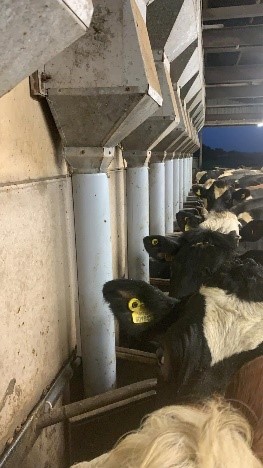Feeding to Yield – Making Sure it is Accurate
1 March 2021In parlour feeding of concentrates has long been a traditional way to feed supplementary concentrates to dairy cows, with potential added benefits of encouraging cow flow into the parlour, promoting milk let down and ensuring concentrates are targeted to the higher performing cows to support yields, condition and fertility. Out of parlour feeders provide an alternative way to target additional concentrate and do away with dust in the parlour, can improve cow flow out of the parlour as cows are not “pinching” from unemptied troughs and maintain a more stable rumen pH as little and often can be fed over the day. However, if not managed properly, feeding excess concentrates can prove costly and limit forage intake.
Feeding to yield in a modern parlour is fairly easy. Sophisticated farm software uploads yield data either direct from the parlour or from monthly milk recording and then adjusts the concentrate fed depending on days in milk (DIM) and yield. The main areas to focus on here are that feeders are correctly calibrated and that feed levels are set appropriately.
An example of a feed to yield table for a herd being fed a base ration at M+24 litres is shown below:
| Group | Feed Rate |
|---|---|
| 0-21 days in milk | 1kg – 5.5kg for cows 1kg – 3.5kg for heifers Stepped up over 3-week period |
| Heifers Day 30 + | Minimum 3.5kg + 0.45kg/litre for every litre over 24l Fed to a max of 6kg/day. Heifers stay on this format till late lactation |
| Cows Day 30 + | Minimum 4kg + 0.45kg/litre for every litre over 28l Fed to a max of 6kg/day up to 100 DIM |
| Cows over 100 DIM and PD+ | No minimum, fed 0.45kg/l for every litre produced over base ration |
| Late lactation cows & heifers | Group fed on a “low” ration. Heifers receive parlour concentrate at M+10l, cows at M+13l at 0.45kg/l to a maximum of 3kg/day |
Source: DEARA-NI. Future Herd, Greenmount
Whether feeding in or out of the parlour, feeding to yield allows the base TMR to be set at a level for the average yielding cows and then those who are performing over this level have their energy requirement met by additional concentrates.
If you do not have a fully automated system, then more time needs to be set aside to manage your feeding system. Feed tables need to be manually updated on a monthly basis to ensure that cows are receiving the correct amount of concentrate according to yield. Overfeeding, means increased concentrate costs and potentially overfat cows. Underfeeding prevents cows from meeting their true genetic potential and could send cows into negative energy balance, affecting fertility, milk yield and cow health. In a recent on farm case study where feed tables had not been updated, by spending one hour adjusting cake levels around 180kg of concentrate per day were saved, equating to £1400 per month.
In all cases upper limits should be set on the amount of cake which cows are fed at each milking. Overfeeding can lead to cake being left in the troughs if cows do not have time in the parlour to eat it all. This can disrupt cow flow out of the parlour but can also have an adverse effect on rumen pH and increases concentrate costs without necessarily benefiting milk yield.
If you would like more information on dairy cow rations and making use of your farm data to improve efficiency, then please contact the FAS Helpline on 0300 323 0161.
Alison Clark for the Farm Advisory Service
Sign up to the FAS newsletter
Receive updates on news, events and publications from Scotland’s Farm Advisory Service

